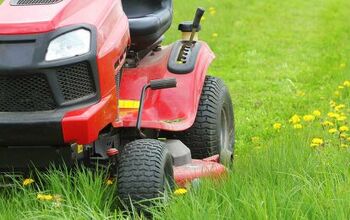How To Start A Generator That Has Been Sitting

Buying a generator is a great way to have a backup plan in case of an emergency. Because they’re used so seldomly, generators are often sitting around for a while before being used. Sometimes this can cause them not to start properly.
To start a generator that has been sitting, first, check that all the components are working. Then drain any old gas, and replace it with fresh gasoline. Also, check the spark plugs and replace them to keep your generator running at optimum levels. Don’t forget to clean the carburetor and check the air filter too.
Don’t worry; we’ll be going into deep detail below about how to start a generator that has been sitting. It’s essential to have a working generator at all times, especially when emergencies come up.
Do You Need Generator Repair Services?
Get free, zero-commitment quotes from pro contractors near you.

What You Can Do
Generators are designed to be incredibly powerful. If you’re struggling to get yours to start, it’s pretty useless. Here are a few things you can do to diagnose the issue and get your generator up and running.
Basic Checkup
The first thing you should do is complete a basic checkup. Doing this will ensure that the generator has enough oil, that the fuel valve is in the on position, and that the choke is engaged.
This is the easiest step you can take to find out why your generator isn’t running. Once you do this and see that everything is in check, try starting it again. If it’s still not working, consider trying one of these other tricks.
Get Some Fresh Fuel
Another common reason a generator that’s been sitting for a while isn’t starting is due to old fuel. This is an extremely common issue that can easily be fixed with some fresh petrol. Fuel is degradable and has a natural process where it stops working overtime.
It’s essential to have regular oil and gas changes if your generator has been sitting for an extended period of time. If you don’t know if the gas is old or not, take a look at it. If there’s any amount of cloudiness or fog, it needs to be changed.
To prevent this from happening in the future, run the generator dry after using it. You could also use a fuel stabilizer. This is a great tool to have if you’re using a portable generator.
Check the Spark Plug
Next, consider checking the spark plug. Not everyone knows how to do this, but it’s incredibly easy. Simply pull it out, and you’ll be able to see what kind of condition the spark plug is in.
Take a carb cleaner to clean it if the spark plug is dirty. After pulling the spark plug, spray some of the carb cleaner into the cylinder as well. If the machine still isn’t starting, this can happen even if you do this step correctly.
Another thing you can try is replacing the spark plug completely. Sometimes spark plugs go bad or get worn out, even if they look perfect. Luckily spark plugs are inexpensive and easy to replace.
Check the Air Filter
Once you’ve checked the spark plug, the fuel, and have done a basic checkup, move on to the air filter. In order for a generator to work properly, it needs to have sufficient airflow. Having a working airflow allows the machine to do just that.
Sometimes the air filter can get clogged, which prevents the generator from starting. Pull the air filter and check to see if it’s clogged or not. Even if it looks fine, clean it to ensure that it is.
If you do find that it’s clogged or looks worn out, replace it with a new air filter. Again, this is a cheap solution to a frustrating problem. While you’re buying the replacement, consider picking up two so that you have one on hand if this happens again.
The Fuel Line and the Fuel Filter
If you’ve tried everything above and are still facing a generator that’s not working, there’s more you can do. The next thing you can try is to check the fuel line. It’s not uncommon for the fuel line to pinch, clog, leak, or even crack over time.
Some of these fuel line damages are easy to fix, while others are impossible. If you come across something you can’t fix or have professionally fixed, it needs to be replaced. Thankfully spare fuel lines are affordable and easy to install.
Just because something seems unlikely to happen doesn’t mean that it won’t. This is why I like to keep spare parts on hand, just in case. If you’re using a portable generator, you likely won’t even have a fuel line to deal with.
To check to see if there’s something wrong with the fuel line, detach it from the carburetor. You can then see if the fuel goes through the filter or not. If it doesn’t, it’s likely clogged, which will require a replacement.
Clean the Carburetor
The penultimate thing you can do to get a sitting generator working is to clean the carburetor. You’ll need to pick up some car cleaner to get the job done. All you have to do is spray it all around and in the carburetor and the jets.
Sometimes cleaning the carburetor requires you to remove it. It’s crucial to not scratch or damage the part in any way when taking it out. Cleaning a carburetor is a good practice to put into place to ensure that there isn’t any old fuel sitting around.
Generators with Electric Start
If you’re working with a generator that has an electric start, the problem is likely to be the battery. The first thing you want to do is check to see if the battery is dead or not. If it is, you’ll need to replace it.
If the battery isn’t dead, it’s time to look for a blown fuse. Once you find the blown fuses, replace them with new ones. You can also check the connections that could be faulty due to corrosion.
To prevent battery damage in the future, regularly clean the terminals using a wire brush. When it’s fully charged, make sure that it’s still not plugged in as this can damage the battery.
Cost of Generator Parts
Below you’ll find some of the average prices for generator parts that could cause it to not start. Replacing these parts can help get the machine working like it’s new again. You can get many of these parts for cheaper, depending on things like your location and the brand name.
| Part | Average Cost |
| Air filter | $6 |
| Battery | $30 |
| Spark plugs | $3 |
| Fuel line | $9 |
| Carburetor | $15 |
| Fuel filter | $7 |
Do You Need Generator Repair Services?
Get free, zero-commitment quotes from pro contractors near you.

Related Questions
What can cause a generator not to start?
If you find yourself frustrated by a generator that just won’t start, it’s likely due to battery failure. This can happen because of a loose connection or even sulfation build-up. Replacing the battery should do the trick.
Is it bad to run a generator on choke?
Running a generator with the choke continuously on can damage the machine in multiple ways. It can eat up an excessive amount of fuel, causes the generator engine to run regularly, and can permanently damage the engine. Some generators have engines that use a manual fuel primer bulb. This helps to control the ratio of fuel to air that’s in the engine when starting.
Why does my generator only run with the choke on?
When a generator only runs when the choke is on, you’re likely dealing with a bad diaphragm. It can’t draw the proper amount of fuel in, leading to a vacuum leak. Sometimes the carburetor will blow a pressed-in BB out of a drilled passageway, causing it to only run when the choke is on.

Kirstin is a passionate writer who loves helping people learn new things when it comes to home improvement. When she's not behind a keyboard, she enjoys DIY projects, crafts, spending time with her pets, and making videos. She hopes that with all she writes, someone is finding a solution to their home improvement needs.
More by Kirstin Harrington












![The 5 Best Angle Grinders – [2022 Reviews & Buyer's Guide]](https://cdn-fastly.upgradedhome.com/media/2023/07/31/9071326/the-5-best-angle-grinders-2022-reviews-buyer-s-guide.jpg?size=350x220)
![10 Best Electric Lawn Mowers - [2022 Reviews & Top Rated Models]](https://cdn-fastly.upgradedhome.com/media/2023/07/31/9070486/10-best-electric-lawn-mowers-2022-reviews-top-rated-models.jpg?size=350x220)









![How To Reset A Whirlpool Cabrio Washer [In 5 Easy Steps!]](https://cdn-fastly.upgradedhome.com/media/2023/07/31/9076531/how-to-reset-a-whirlpool-cabrio-washer-in-5-easy-steps.jpg?size=350x220)



